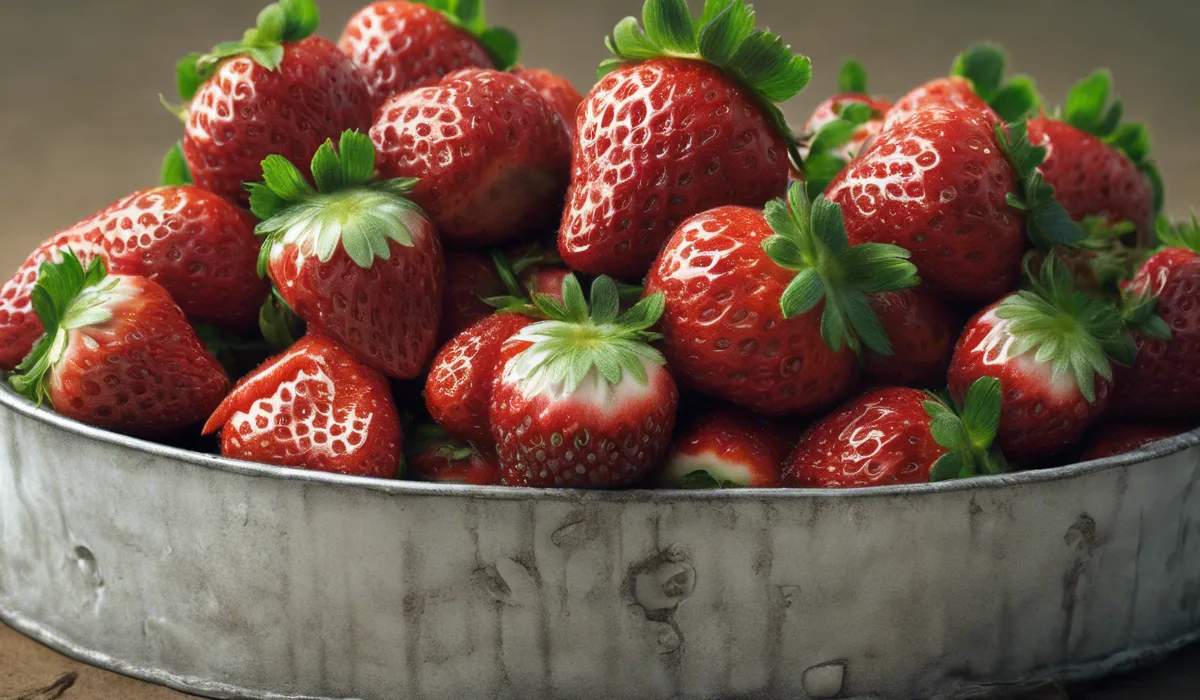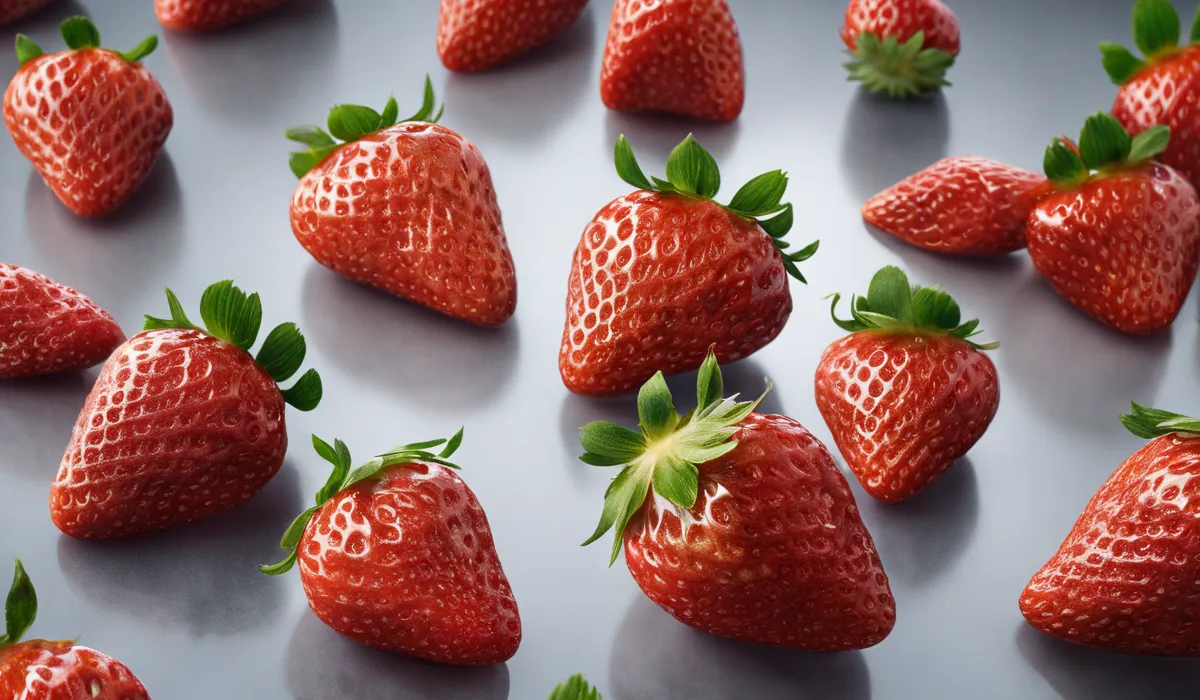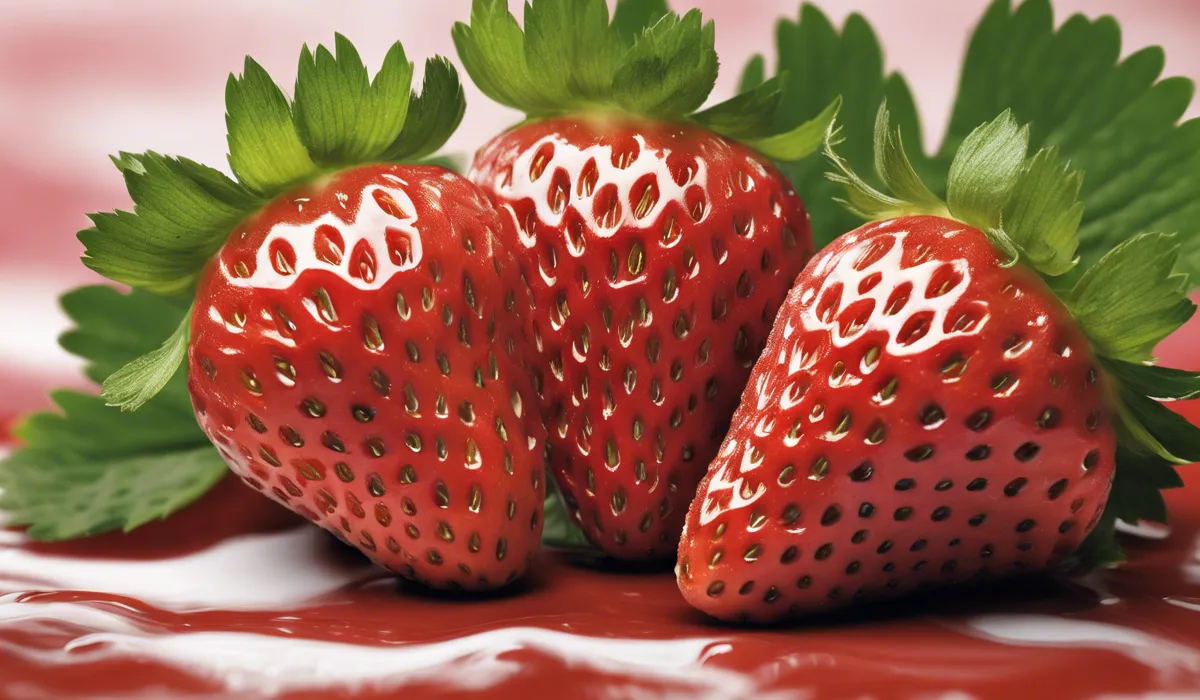Strawberries mold quickly due to their high moisture content and delicate skin, which easily bruise and harbor mold spores. Refrigeration can slow the process, but once exposed to air, the spores proliferate rapidly.
Factors Contributing to Strawberry Mold

High Water Content in Strawberries
Strawberries come packed with water, making up a significant portion of their weight. This moisture is essential for their juicy appeal, but it also sets the stage for mold growth.
The water inside strawberries creates a perfect environment for mold spores to thrive, especially when the berries are stored in a place with little to no air circulation.
Once mold starts to grow, it spreads quickly, using the berry’s moisture to sustain itself.
Warmer Temperatures and Humidity Levels
Temperature and humidity play a critical role in the lifespan of strawberries. Warmer conditions and high humidity levels accelerate mold growth.
Mold spores are more active in these conditions, and strawberries stored in such environments will mold faster than those kept in cooler, drier places.
Even a few hours outside the refrigerator can significantly increase the risk of mold development.
Natural Sugars Present in Strawberries
Strawberries are rich in natural sugars, which are another reason they mold quickly. These sugars are an excellent food source for mold spores.
When mold spores land on a sugary strawberry, they have all they need to begin multiplying. The presence of sugar accelerates the life cycle of mold, leading to faster spoilage.
Ripeness at the Time of Purchase
When you buy strawberries, their stage of ripeness matters. Overripe strawberries are more susceptible to mold because their skin is softer and more easily broken.
This makes it easier for mold spores to penetrate and infect the fruit. Choosing strawberries that are not too ripe can help delay molding, giving you more time to enjoy them.
Bruising and Damage to the Fruit’s Surface
Strawberries are delicate. Any bruising or damage to their surface can become an entry point for mold spores.
Handling strawberries too roughly, or having them jostled during transport, can break their skin and expose the inner moisture to mold spores.
It’s important to handle strawberries gently to prevent bruising and subsequent mold growth.
Lack of Natural Preservatives
Unlike some other fruits, strawberries do not contain natural preservatives that would help ward off mold. Their short shelf life is partly due to this lack of defense against fungal invaders.
Without these natural preservatives, strawberries are more vulnerable to mold, which can take hold quickly and spread throughout the fruit.
Prevention and Storage Techniques

Proper Selection at the Store or Market
To avoid moldy strawberries, start with selecting the right ones at the store or market. Look for bright red berries with green, fresh-looking caps and avoid any with signs of dark spots or moisture.
By choosing strawberries that are in good condition, you reduce the risk of mold development later on.
Refrigeration and Temperature Control
Keeping strawberries cold is crucial for slowing down mold growth. Refrigerate your strawberries as soon as you get them home.
The cooler temperature inside the fridge slows down the activity of mold spores and helps maintain the freshness of the berries for a longer period.
Washing Strawberries Only Before Consumption
It can be tempting to wash all your strawberries at once, but this can actually promote mold growth. The added moisture from washing can hasten decay.
To prevent this, wash strawberries individually right before you eat them, reducing the opportunity for mold to take hold.
Use of Vinegar or Lemon Juice Baths
A vinegar or lemon juice bath can help extend the life of your strawberries. The acidic nature of these liquids can kill off mold spores.
Soak your strawberries in a mixture of vinegar or lemon juice and water, then thoroughly dry them before storing. This method can help prevent mold and keep your strawberries fresh for longer.
Storing Strawberries in Breathable Containers
Storage containers for strawberries should allow air to circulate. Airtight containers trap moisture and can create an environment that encourages mold growth.
Instead, use containers that have some ventilation, or leave the lid slightly open to allow moisture to escape. This will help keep your strawberries dry and mold-free.
Separation from Other Produce to Prevent Cross-Contamination
Other fruits and vegetables can harbor mold spores that might spread to your strawberries.
To prevent cross-contamination, store strawberries separately from other produce. This will minimize the risk of mold transfer and help your strawberries stay fresh and mold-free for as long as possible.
Understanding Mold Growth on Strawberries

Types of Mold that Commonly Affect Strawberries
Several types of mold can affect strawberries, with Botrytis cinerea, also known as gray mold, being the most common.
This mold appears as a fuzzy gray coating on the surface of the fruit. Other molds, such as Rhizopus, Penicillium, and Aspergillus, can also occur, each with its own characteristics and effects on the fruit.
The Role of Spores in Mold Propagation
Mold reproduces through tiny spores that can be airborne. When these spores land on a strawberry, they find the warm, moist, and sugary conditions they need to grow.
The spores germinate, sending out threads that penetrate the fruit’s flesh, and start the mold growth process. Proper storage and handling of strawberries can minimize the exposure to these spores.
The Visual and Olfactory Indicators of Moldy Strawberries
You can often tell if a strawberry is moldy by looking at it or smelling it. Moldy strawberries may have white, green, or gray fuzzy spots.
Sometimes, mold is not visible, but the strawberry might have a soft, mushy feel. A musty or off smell is another indicator that mold has begun to grow on your strawberries.
Health Implications of Consuming Moldy Strawberries
Eating moldy strawberries can be harmful to your health. Mold can produce mycotoxins, which can cause allergic reactions or respiratory problems in some individuals.
It’s best to avoid eating strawberries that show signs of mold, and if you suspect a strawberry is starting to go bad, discard it to prevent any potential health issues.
The Life Cycle of Strawberries from Farm to Table
Understanding the journey of strawberries from the farm to your table can help you appreciate why they mold so fast.
Strawberries are often picked when they’re ripe and immediately packed for transport. During this time, they can be exposed to mold spores.
Once they reach the store, they’re displayed for purchase, which is when proper selection becomes critical.
After purchase, the way you handle and store your strawberries will determine how long they stay fresh.
By controlling the conditions throughout this lifecycle, you can enjoy your strawberries for a longer time without mold.
FAQs About Strawberry Mold
Why do strawberries mold faster than other fruits?
Strawberries mold faster than many other fruits due to their high water content and thin skin, which make them bruise easily and provide a conducive environment for mold spores to thrive.
Can refrigeration prevent strawberries from molding?
Refrigeration can slow down the molding process by inhibiting the growth of mold spores, but it cannot prevent mold entirely, especially if strawberries are already contaminated when stored.
How does air exposure affect the mold growth on strawberries?
Once exposed to air, mold spores on the surface of strawberries can proliferate rapidly, accelerating the molding process due to the presence of oxygen and moisture.
Why do bruised strawberries mold more quickly?
Bruised strawberries are more susceptible to molding because the damaged skin allows mold spores to penetrate easily and the bruising releases additional moisture that mold can feed on.
What is the best way to store strawberries to avoid mold?
The best way to store strawberries to avoid mold is by keeping them dry, refrigerated, and in a container that allows for air circulation, and by removing any damaged or moldy berries before storage.
Final Thoughts
Strawberries are particularly susceptible to molding due to their high moisture content and tender skin that bruises easily, making them a breeding ground for mold spores.
While refrigeration can delay spoilage, exposure to air allows these spores to multiply swiftly, resulting in rapid mold growth on these berries.
